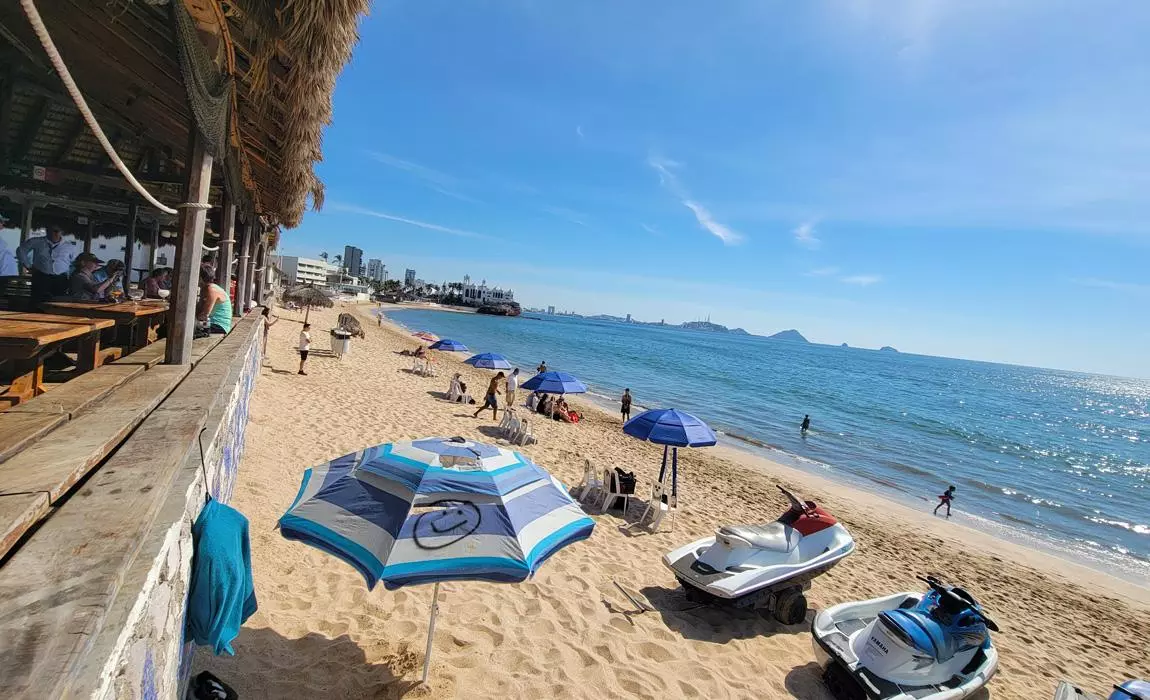We consider Mexican Riviera cruises the quintessential Pacific Coast cruise experience, offering travelers an authentic blend of Mexico's rich cultural heritage and stunning Pacific coastline. This captivating region combines centuries-old traditions with modern resort amenities, creating cruise experiences that showcase the real Mexico beyond typical tourist attractions. Travelers exploring the Mexican Riviera witness colonial architecture, vibrant local markets, historic churches, and traditional Mexican celebrations while enjoying world-class beaches, exceptional cuisine, and warm hospitality. From Puerto Vallarta's iconic crown-topped church to Mazatlan's historic lighthouse and Cabo's dramatic rock formations, each port offers unique cultural discoveries and meaningful connections with Mexican traditions.
Questions
What Is Your Favorite Type Of Cruise Excursion?
Essential Mexican Riviera Cruise Planning
Key considerations for choosing your Mexican Riviera cruise and experiencing Mexico's Pacific Coast culture and natural beauty.
- Seasonal timing - plan during the dry season (November-May) for ideal weather, whale watching opportunities, and cultural festivals, while being aware that hurricane season (June-November) can occasionally affect itineraries
- Port variety - choose from classic 7-day itineraries visiting Puerto Vallarta, Mazatlan, and Cabo San Lucas for comprehensive cultural immersion
- Cultural preparation - learn basic Spanish phrases and Mexican customs to enhance interactions with local communities and cultural sites
- Shore excursion balance - mix organized cultural tours with independent exploration to experience both guided learning and spontaneous discoveries
- Expert guidance - book with travel specialists who understand Mexican culture and can recommend authentic experiences beyond typical tourist activities
Article Index
- The Love Boat Legacy and Modern Mexican Riviera Cruising
- Current and Upcoming Mexican Riviera Cruise Offerings
- Expanded Sea of Cortez and Back-to-Back Cruise Options
- Panama Canal and Extended Mexican Riviera Options
- Popular Mexican Riviera Ports for Cultural Discovery and Relaxing In The Sun
- Planning Your Mexican Riviera Cultural Adventure
- What Makes the Mexican Riviera Special for Cruise Travelers
The Mexican Riviera represents one of the most culturally rich and visually stunning cruise destinations available from West Coast ports. Stretching along Mexico's Pacific coast, this region combines vibrant colonial cities, pristine beaches, and authentic Mexican traditions that have remained largely unchanged for generations. Unlike more commercialized Caribbean destinations, Mexican Riviera ports maintain their cultural authenticity while welcoming cruise travelers with genuine warmth and hospitality.
Most seven-day Mexican Riviera cruises from San Diego and Los Angeles visit three iconic ports - Puerto Vallarta, Mazatlan, and Cabo San Lucas - each offering distinct cultural experiences and historical significance. Lines such as Princess Cruises, Holland America Line, Celebrity Cruises, Norwegian Cruise Line, and Carnival Cruise Line provide comprehensive itineraries that allow sufficient time for both organized cultural exploration and independent discovery.
This Pacific Coast paradise stands apart from other cruise destinations through its combination of Spanish colonial heritage, indigenous traditions, and stunning natural beauty. Whether exploring colonial churches, climbing historic lighthouses, or witnessing dramatic rock formations where the Pacific Ocean meets the Sea of Cortez, Mexican Riviera cruises provide authentic cultural immersion alongside traditional cruise amenities.
The Love Boat Legacy and Modern Mexican Riviera Cruising
The Mexican Riviera gained international recognition through the iconic television series "The Love Boat," which popularized these romantic Pacific Coast destinations throughout the 1970s and 1980s. The show's glamorous portrayal of cruise life aboard the Pacific Princess, sailing to Puerto Vallarta, Mazatlan, and Cabo San Lucas, introduced millions of viewers to the beauty and romance of Mexican Riviera cruising.
While some traditional Mexican Riviera ports like Acapulco have unfortunately fallen out of favor for cruise lines due to safety concerns related to drug cartel violence, the core destinations of Puerto Vallarta and Mazatlan have not only recovered but now offer enhanced security measures and tourism infrastructure. Both cities have invested heavily in tourism infrastructure, security measures, and cultural preservation that makes them welcoming destinations for cruise travelers, though visitors should check current U.S. State Department travel advisories for the latest safety information.
Puerto Vallarta has transformed into a sophisticated destination that balances authentic Mexican culture with world-class amenities, maintaining its colonial charm while providing modern safety standards. Mazatlan has undergone remarkable revitalization of its historic center, creating a beautiful environment for cultural exploration that showcases centuries of Mexican Pacific Coast heritage.
These improvements, combined with Mexico's natural beauty and rich cultural traditions, have solidified the Mexican Riviera's position as a popular cruise destination that offers both cultural experiences and authentic connections with Mexican heritage for travelers seeking meaningful travel experiences.
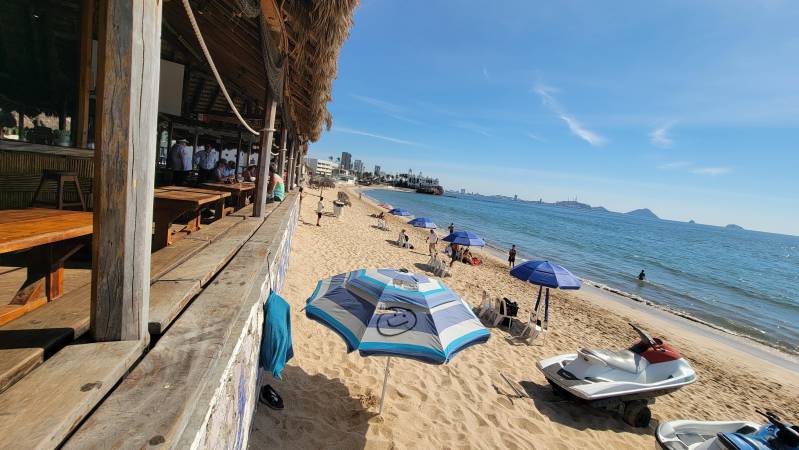
Current and Upcoming Mexican Riviera Cruise Offerings
Major cruise lines continue expanding their Mexican Riviera programs, with exciting new offerings launching in 2026. Virgin Voyages will debut their adults-only Brilliant Lady on Mexican Riviera itineraries from Los Angeles starting in April 2026, offering seven-night "Hollywood Sunsets & Mexican Horizons" cruises visiting Cabo San Lucas, Mazatlan, and Puerto Vallarta. This marks Virgin Voyages' entry into the Mexican Riviera market with their signature contemporary cruising style and innovative onboard experiences.
Before MSC Cruises debuts in Alaska, MSC Poesia will also visit Mexican Riviera ports as part of their 18-night Panama Canal repositioning cruise from Miami to Seattle in April 2026, including a tender call in Cabo San Lucas along with California ports San Diego and Los Angeles. This positioning voyage provides passengers with the unique opportunity to experience Mexican culture as part of a grand canal transit adventure.
Princess Cruises, celebrating over 50 years of Mexican Riviera cruising, offers both 7-day classic itineraries and 10-day extended voyages that include Sea of Cortez destinations. Holland America Line offers 7-day Mexican Riviera cruises, featuring destination dining that showcases regional Mexican cuisine and cultural programming highlighting Spanish colonial history.
Norwegian Cruise Line operates year-round Mexican Riviera cruises from Los Angeles, with 5-day and 7-day options that cater to different schedules and budgets. Carnival Cruise Line provides excellent value for families seeking Mexican cultural experiences combined with onboard entertainment, while Celebrity Cruises offers premium experiences with enhanced shore excursion programs focusing on cultural immersion.
Expanded Sea of Cortez and Back-to-Back Cruise Options
While most Mexican Riviera itineraries focus on the classic three-port combination of Puerto Vallarta, Mazatlan, and Cabo San Lucas, some cruise lines have been venturing deeper into the Sea of Cortez, offering alternative ports that provide even more diverse cultural and natural experiences. These expanded itineraries may visit La Paz instead of Puerto Vallarta, allowing travelers to experience Baja California Sur's capital city with its authentic Mexican atmosphere, pearl diving heritage, and proximity to pristine marine sanctuaries.
An increasingly popular option for travelers seeking comprehensive exploration of this incredibly diverse and exciting region is the back-to-back cruise experience. These 14-day voyages from San Diego combine two distinct seven-day itineraries - one focusing on traditional Mexican Riviera ports and another exploring Sea of Cortez destinations. This extended cruise format allows guests to experience the full spectrum of Pacific Coast Mexico, from colonial cities and resort destinations to remote islands, pristine marine environments, and authentic fishing villages that showcase Mexico's maritime heritage.
Back-to-back cruises provide the ultimate cultural immersion opportunity, offering time to develop deeper connections with Mexican culture while experiencing both the well-developed tourism infrastructure of traditional ports and the untouched natural beauty of Sea of Cortez destinations. These longer voyages appeal particularly to travelers seeking authentic cultural discovery combined with marine wildlife encounters in one of the world's most biodiverse seas.
Panama Canal and Extended Mexican Riviera Options
Mexican Riviera ports frequently serve as highlights on Panama Canal cruises departing from San Diego, providing travelers with the opportunity to experience Mexican culture as part of longer repositioning or canal transit voyages. These extended itineraries typically offer more time in ports like Cabo San Lucas and Puerto Vallarta, allowing for deeper cultural exploration and multiple shore excursion opportunities.
Select Panama Canal itineraries may offer extended or late evening stays in Cabo San Lucas, enabling passengers to experience the destination's evening culture, local dining scene, and nightlife. These longer visits provide opportunities for more immersive cultural experiences, from traditional Mexican cooking classes to authentic folkloric performances that showcase regional heritage.
The combination of Mexican Riviera ports with Panama Canal transits creates unique cruise experiences that blend Mexican Pacific Coast culture with engineering marvels and Central American destinations. These grand voyage itineraries appeal to travelers seeking comprehensive cultural exploration and once-in-a-lifetime travel experiences.
Popular Mexican Riviera Ports for Cultural Discovery and Relaxing In The Sun
The three primary Mexican Riviera ports each offer distinct cultural experiences that showcase different aspects of Mexico's Pacific Coast heritage and natural beauty. It's important to note the time zone differences when planning port activities: Puerto Vallarta operates on Central Time, while both Mazatlan and Cabo San Lucas use Mountain Time (no daylight saving time observed).
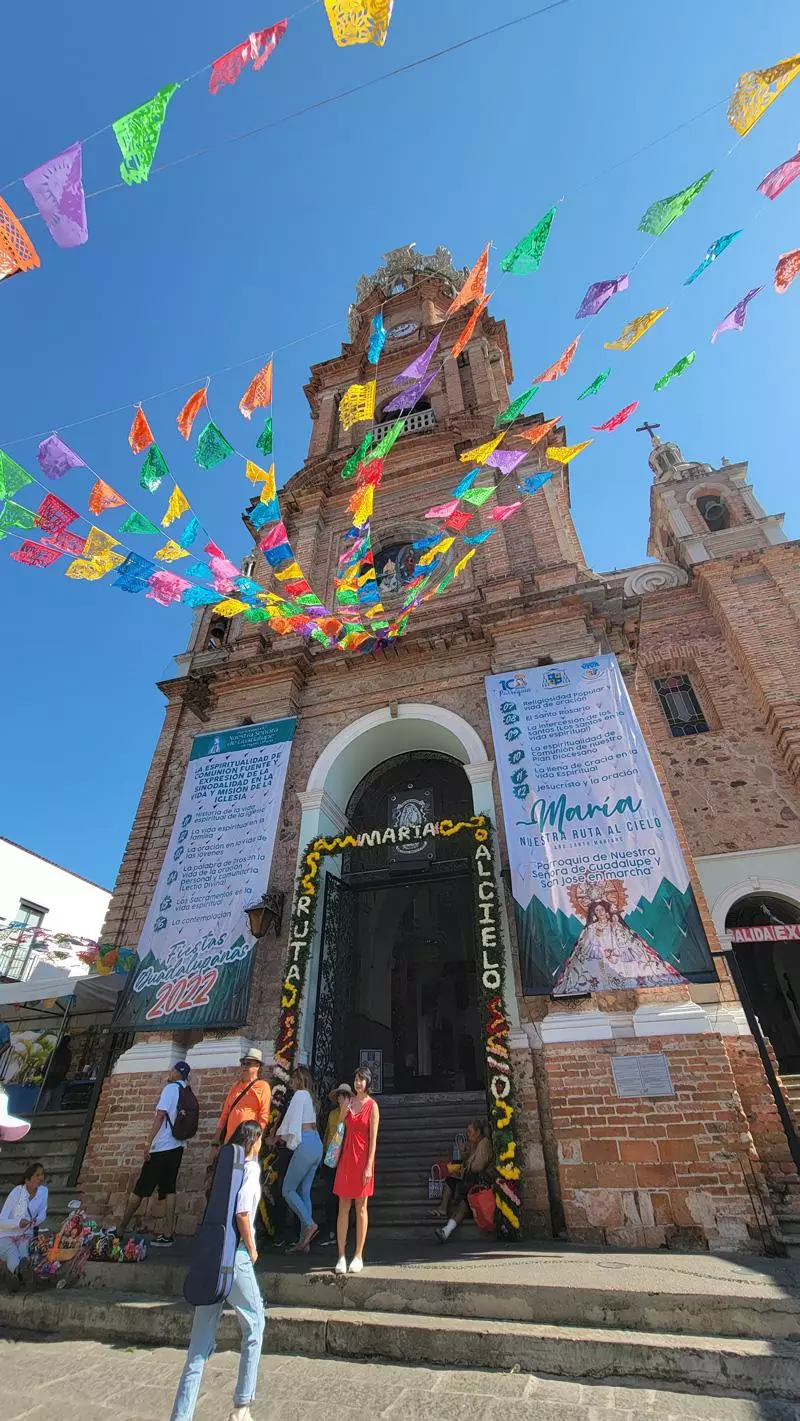
Puerto Vallarta - Colonial Charm and Artistic Heritage
Puerto Vallarta serves as the crown jewel of Mexican Riviera ports, combining authentic Mexican culture with sophisticated resort amenities. The city's heart centers around the iconic Church of Our Lady of Guadalupe, built between 1930 and 1940 on the foundations of a 1901 chapel. This neo-baroque church features the famous crown-shaped bell tower that has become Puerto Vallarta's most recognizable landmark, with the distinctive crown added to the tower in 1963 and restored in 2009.
The church dedicates itself to Our Lady of Guadalupe, Mexico's patron saint, and hosts vibrant celebrations during the first twelve days of December. These festivities feature candlelit processions down Calle Juarez, traditional dancers, mariachi music, and food vendors creating an authentic Mexican cultural experience that cruise visitors can witness.
El Malecon, Puerto Vallarta's mile-long oceanfront boardwalk, showcases local art, culture, and daily Mexican life. This scenic promenade features art installations, Los Arcos Amphitheater hosting free performances by local musicians and dance troupes, and numerous restaurants serving authentic regional cuisine. The boardwalk connects downtown's colonial architecture with the modern Zona Romantica, providing easy walking access to cultural sites.
Downtown Puerto Vallarta preserves its colonial character through cobblestone streets, colorful buildings, and traditional Mexican architecture. The Municipal Palace features murals by renowned local artist Manuel Lepe, whose work inspired the iconic Puerto Vallarta letters sign and whose influence extends throughout the city's artistic identity.
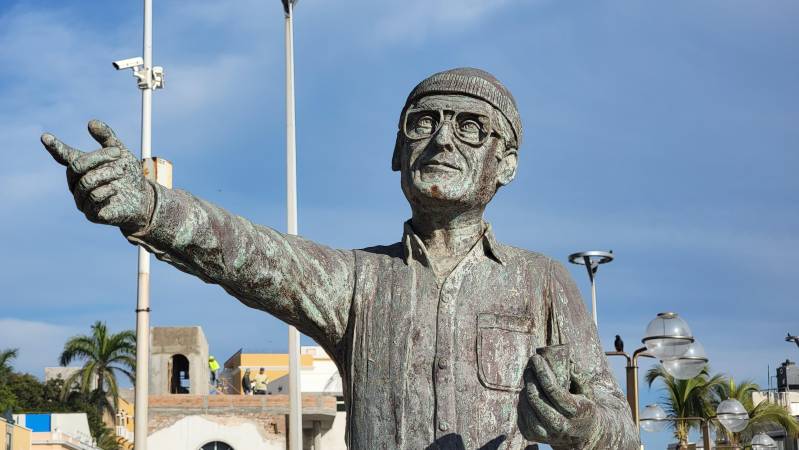
Mazatlan - Historic Architecture and Maritime Heritage
Mazatlan combines nearly 500 years of history with authentic Mexican coastal culture, offering cruise travelers one of Mexico's best-preserved historic centers. The city's Centro Historico features beautiful colonial architecture, traditional plazas, and authentic Mexican daily life largely unchanged by tourism development.
El Faro lighthouse stands as Mazatlan's most iconic landmark, with lighting on the hill since 1879 and current lighthouse works formalized in 1892. Located atop Cerro del Creston at approximately 157 meters above sea level, this lighthouse ranks among the world's highest natural lighthouses. The challenging hike to the summit rewards visitors with panoramic views of the Pacific Ocean, the city, and surrounding mountains.
The lighthouse area now includes a glass skywalk extending over the cliffside, providing dramatic photo opportunities and spectacular coastal views. The facility also features a small maritime museum showcasing Mazatlan's crucial role in Pacific Coast navigation and maritime commerce.
Plaza Machado anchors Mazatlan's cultural district, surrounded by restored 19th-century buildings housing art galleries, restaurants, and the historic Angela Peralta Theater. This beautifully preserved opera house, built in 1874, continues hosting cultural performances and serves as a venue for traditional Mexican music and dance.
The Basilica de la Inmaculada Concepción dominates the city's skyline with its distinctive yellow-tiled domes and towers, built between 1856 and 1899. The cathedral represents one of Mexico's most beautiful examples of religious architecture, with an interior featuring stunning stained glass windows and traditional Mexican religious art that reflects the city's deep Catholic heritage.
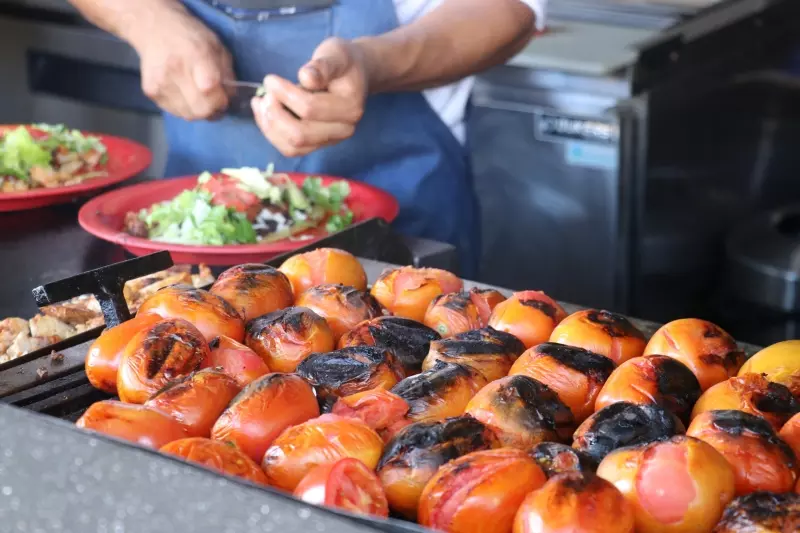
Cabo San Lucas - Natural Wonder and Resort Elegance
Cabo San Lucas occupies the dramatic southern tip of Baja California Peninsula, where the Pacific Ocean meets the Sea of Cortez (also known as the Gulf of California). This unique geographic position creates the iconic El Arco (The Arch), a natural limestone arch formation carved by centuries of wind and wave erosion at Land's End.
Since Cabo San Lucas is a tender port for large cruise ships, passengers are transported by tender boats from ships anchored offshore to the marina. El Arco serves as Cabo's most famous landmark and is typically reached by boat from the marina or Medano Beach. Glass-bottom boat tours provide views of marine life while approaching the arch, often including sightings of sea lions, pelicans, and seasonal whale migrations. The area around the arch features two distinct beaches - Lover's Beach on the Sea of Cortez side with calm, generally swimmable waters, and Divorce Beach on the Pacific side with dramatic waves unsuitable for swimming due to strong currents.
Marina Cabo San Lucas functions as the town's cultural and commercial center, where cruise tenders dock and visitors access the downtown area. The marina district features authentic Mexican restaurants, local craft markets, and cultural attractions that showcase Baja California's unique heritage blending Mexican traditions with coastal influences.
Downtown Cabo maintains its character as a traditional Mexican fishing village despite resort development, with local markets, family-owned restaurants, and cultural sites that reflect generations of maritime traditions. The contrast between traditional Mexican culture and modern resort amenities creates unique opportunities for cultural discovery and authentic local interactions.
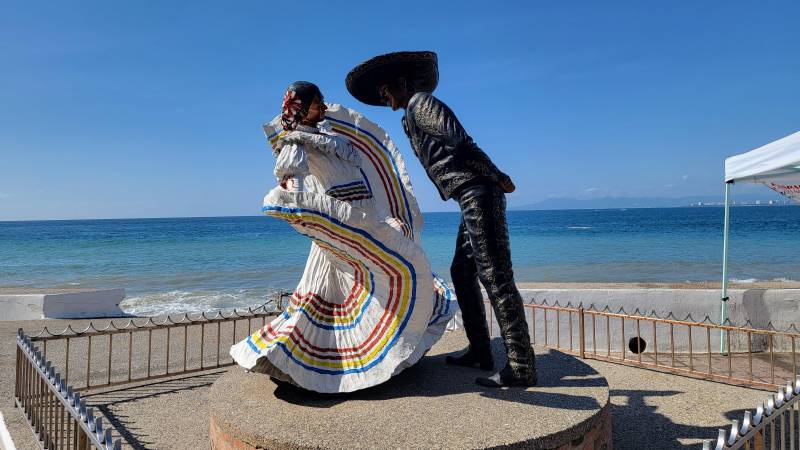
Planning Your Mexican Riviera Cultural Adventure
Successful Mexican Riviera cruises require understanding seasonal patterns, cultural considerations, and practical planning that enhances both sightseeing and cultural immersion experiences.
Optimal Timing for Weather and Culture
The dry season from November through May provides ideal conditions for Mexican Riviera cruises, with minimal rainfall, comfortable temperatures averaging in the 80s, and excellent conditions for cultural exploration. Hurricane season runs roughly June through November, which can occasionally affect itineraries and sea conditions. This period also coincides with Mexico's winter festival season, including celebrations for Our Lady of Guadalupe in December and various local festivals throughout winter months.
The winter months offer excellent whale-watching opportunities, as gray whales migrate to the Pacific Coast breeding areas and other species concentrate in Mexican waters. January through March provides peak whale watching conditions, particularly around Cabo San Lucas and Puerto Vallarta.
Cultural Preparation and Etiquette
Basic Spanish language skills significantly enhance interactions with local communities and cultural sites, particularly in authentic areas where English may be limited. Understanding Mexican customs, such as appropriate dress for religious sites and respectful photography practices, demonstrates cultural sensitivity and opens doors to more meaningful local connections.
Mexican Riviera ports maintain strong Catholic traditions, with religious sites playing central roles in daily life and cultural celebrations. Visitors should dress modestly when visiting churches and religious landmarks, avoiding revealing clothing out of respect for local customs and religious practices. Some churches may restrict photography during services.
Shore Excursion Planning
Balance organized cultural tours with independent exploration to maximize authentic experiences while ensuring access to significant historical and cultural sites. Organized excursions provide expert guidance and cultural context, while independent time allows spontaneous discoveries and personal connections with local communities.
Popular cultural excursions include Puerto Vallarta's historic walking tours featuring the Church of Our Lady of Guadalupe and Malecon exploration, Mazatlan's El Faro lighthouse hike combined with Centro Historico visits, and Cabo's natural landmark tours that include cultural context about Baja California's unique heritage.
Practical Considerations
Pack layers for varying temperatures, as morning and evening temperatures can be cooler than midday heat, particularly during winter months. Comfortable walking shoes prove essential for exploring cobblestone streets, historic sites, and cultural landmarks throughout all three ports.
Consider the time zone differences when planning activities and shore excursions - Puerto Vallarta operates on Central Time, while Mazatlan and Cabo San Lucas use Mountain Time (with no daylight saving time observed in these locations). This affects shore excursion timing and provides opportunities for extended evening exploration in certain ports.
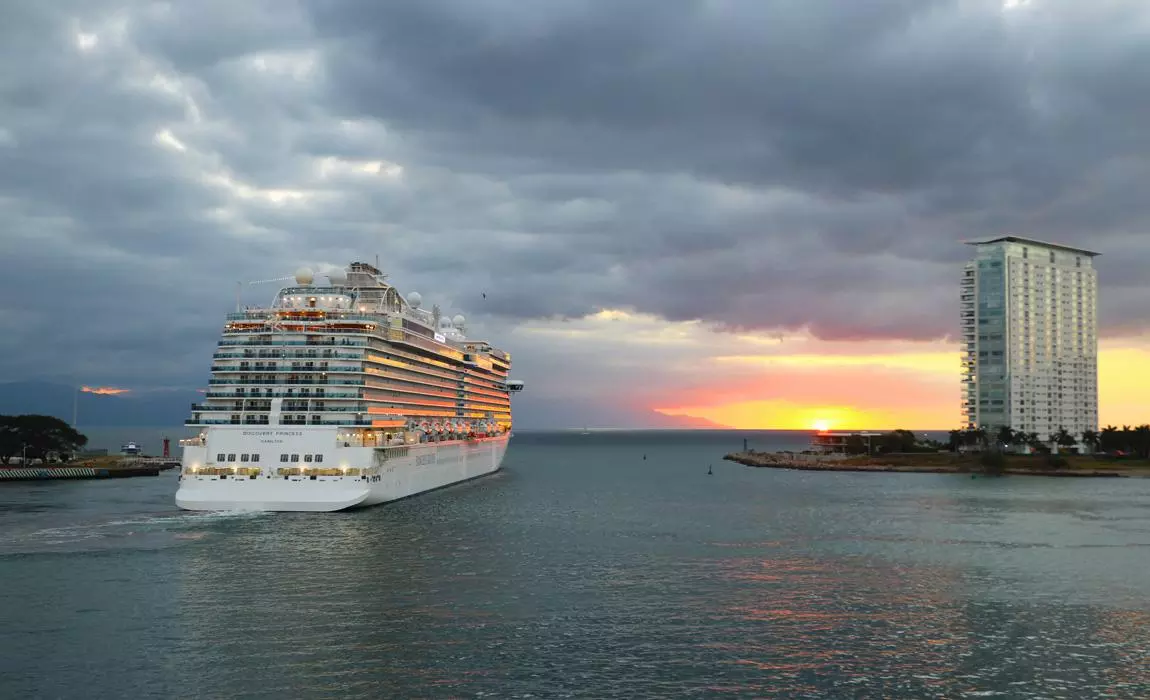
What Makes the Mexican Riviera Special for Cruise Travelers
The Mexican Riviera stands apart through its authentic cultural preservation, dramatic Pacific Coast setting, and genuine Mexican hospitality that creates meaningful travel experiences.
Authentic Cultural Heritage and Natural Beauty
Unlike many cruise destinations that cater primarily to tourism, Mexican Riviera ports maintain their authentic Mexican character. Puerto Vallarta's Church of Our Lady of Guadalupe remains the spiritual center for locals, while Mazatlán's Centro Histórico preserves nearly 500 years of colonial architecture. Local markets and family-owned restaurants operate primarily for residents, creating genuine cultural exchange opportunities.
The region's Pacific Coast setting produces dramatic landscapes impossible to replicate elsewhere. Cabo San Lucas's position where the Pacific Ocean meets the Sea of Cortez creates unique marine ecosystems and geological formations like El Arco. Puerto Vallarta's Sierra Madre mountains meeting Pacific beaches and Mazatlan's historic lighthouse overlooking expansive ocean vistas showcase the region's natural beauty and maritime heritage.
Culinary Excellence and Accessibility
Mexican Riviera cuisine emphasizes fresh seafood, tropical fruits, and regional specialties that differ from those found in interior Mexico. Each port offers a distinct experience - Puerto Vallarta's sophisticated dining, Mazatlán's traditional coastal cooking, and Cabo's fusion of Mexican traditions with international influences. Local markets provide access to authentic ingredients and family recipes passed through generations.
The region's proximity to California ports and year-round cruise season allows flexible travel planning. Winter months provide ideal weather and whale watching opportunities, while the accessible location eliminates complex travel arrangements, allowing more time for cultural exploration.
For cruise travelers seeking authentic cultural immersion combined with stunning natural beauty and genuine Mexican hospitality, the Mexican Riviera offers experiences that satisfy both curiosity about Mexican heritage and desire for meaningful travel connections. Whether exploring colonial churches, climbing historic lighthouses, or witnessing dramatic coastal formations where the Pacific meets the Sea of Cortez, this Pacific Coast paradise provides the perfect blend of cultural discovery and cruise comfort that has enchanted travelers since "The Love Boat" first showcased its romantic allure.
Ready to plan your Mexican Riviera cultural adventure? Contact Heather Hills from Flow Voyages for expert guidance on selecting the perfect cruise line and itinerary for your interests in Mexican culture, Pacific Coast beauty, and authentic travel experiences.
